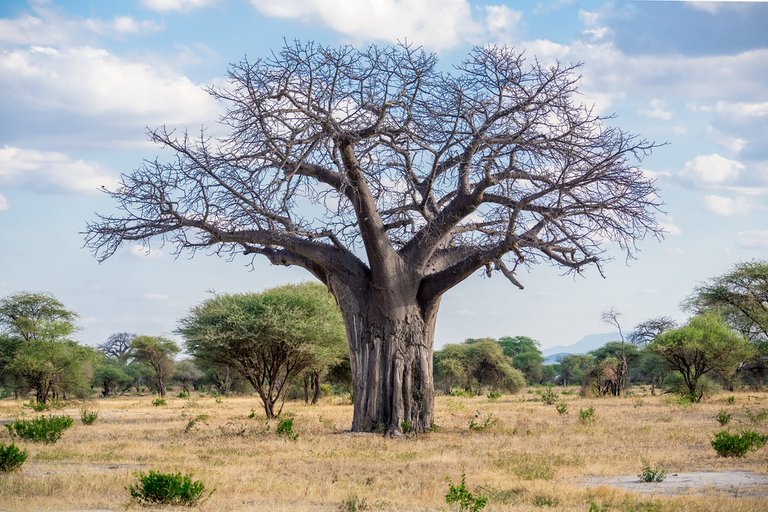The Baobab Tree (Adansonia digitata) On My Farm
I love to see tall and big trees even though there are a lot of mythical things and stories associated with them especially when you listen to Yoruba folks and traditions so when I saw an Ose Tree (Yoruba) known as Baobab Tree (Adansonia digitata) on my farm land, it caught my attention.
A lot of things have been said about the tree, and I have even teased people about cutting it down and all of them not excluding one has given me several reasons why they cannot cut it and non of them has scientific, health, or environmental backings. They are all scared of the diabolical believes that comes with it then at the end, when I tell them I do not intend to cut down the tree, they go further to tell me to find a way to cut it down (provided I do the necessary sacrifice).
This tree can live up to 5000 years, and they can be very big and tall with 7 species in Madagascar, 2 in Africa (Madagascar is a part of Africa), and singular species in other continent including, Asia, Australia, and South America. About 20% of the tree back is water and it is a soft wood so it doesn't have growth rings also, its root is also made up of a lot of water. When this tree is young, it has simple leaves but as it grows bigger, it leaves become digitally palmate.
Its Flowers are big and they open only at night to be pollinated by bats after which large potlike fruits are produced and it is filled with creamy tart (cream of tartar) is a powdery substance with very sour taste and has high vitamin C in it. The Baobab tree makes its own genus known as Adansonia and it has a few number of species including grandidieri, digitata, gregorii, madagascariensis, perrieri, rubrostipa, suarezensis, and za.
![]()
Image From Rawpixel
People in Rurals where the tree grow have turned to Baobab for shelter and for water storage but this is not the same for the specie found in West Africa, Nigeria to be precised because people in this region worship the tree anywhere it is found due to its longevity of life and size. But asides this, the tree is important for a lot of daily activities, having nutritional and medical use such as extracting oil from its seed, its bark and root having antiviral and antimicrobial properties, and it possesses an alkaloid known as Adansonin which is believed to be active against malaria and fever. Researchers using mice discovered that the Baobab fruit pulp prevents hyperlipidemia and this isn't all that there is to the tree.
The tree is big in size and importance and so I wonder why people are still advising that I cut down the tree even when they make cutting it down an extremely difficult task to do thanks to their believes and requirement. For now, the tree would live its life and I will live mine, it will be sharing a part of my farm and I will be admiring it anytime i go to the farm. When I go to the farm later today, I will take a picture of it and post it in the comment.
You Can Study More
https://www.sciencedirect.com/science/article/pii/S2666719320300431
https://www.healthline.com/nutrition/baobab
https://aduna.com/blogs/learn/the-baobab-tree
https://www.nathab.com/blog/the-baobab-tree-an-african-icon-and-longtime-legend
https://blog.everythingdinosaur.com/blog/_archives/2024/05/23
Posted Using INLEO

Wow!! These are trees Yoruba would called Igi Agba but on a more realistic note, the tree is gigantic and it has a lot of use but I wait to see the picture from your farm.
Thanks for your contribution to the STEMsocial community. Feel free to join us on discord to get to know the rest of us!
Please consider delegating to the @stemsocial account (85% of the curation rewards are returned).
Thanks for including @stemsocial as a beneficiary, which gives you stronger support.